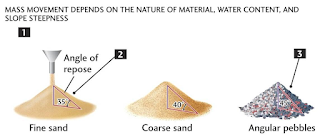Iontophoresis in transdermal permeation
Introduction:
Transdermal drug delivery has been widely used in pharmaceuticals to provide a convenient and effective means of delivering drugs to the systemic circulation. However, the skin acts as a barrier that can limit the absorption of drugs. Iontophoresis is a non-invasive technique that uses an electrical current to enhance the transdermal permeation of drugs. In this scientific paper, we will discuss the principles of iontophoresis and its applications in enhancing transdermal permeation of drugs.
Principles of Iontophoresis:
Iontophoresis involves the application of a small electrical current to the skin, which enhances the permeation of drugs across the skin. The current is typically applied using a pair of electrodes that are placed on either side of the skin. One electrode is charged with a drug, while the other electrode is charged with an opposite charge to attract the drug into the skin. The electrical current can also increase the skin's permeability by opening up the intercellular lipid pathway, thereby allowing more drugs to pass through the skin.
Applications of Iontophoresis:
Local anesthesia: Iontophoresis can be used to enhance the delivery of local anesthesia, such as lidocaine, through the skin. The technique has been shown to be effective in reducing pain during procedures such as dental work or minor surgeries.
Transdermal drug delivery: Iontophoresis can be used to enhance the transdermal delivery of drugs. For example, iontophoresis has been used to deliver anti-inflammatory drugs, such as dexamethasone and diclofenac, for the treatment of inflammatory skin conditions.
Cosmetic applications: Iontophoresis can also be used in cosmetic applications, such as the delivery of anti-aging agents and skin whitening agents.
Diagram:
The diagram below illustrates the principles of iontophoresis for enhanced transdermal permeation.
In the diagram, the skin is shown as a barrier that limits the absorption of drugs. The electrodes are placed on either side of the skin, with the anode (positive electrode) charged with the drug and the cathode (negative electrode) charged with an opposite charge. The electrical current applied by the electrodes increases the skin's permeability and allows the drug to pass through the skin and into the systemic circulation.
Conclusion:
Iontophoresis is a non-invasive technique that can enhance the transdermal permeation of drugs. The technique involves the application of an electrical current to the skin, which can increase the skin's permeability and allow more drugs to pass through the skin. Iontophoresis has applications in local anesthesia, transdermal drug delivery, and cosmetic applications. The technique offers a convenient and effective means of delivering drugs through the skin, and has the potential to improve the efficacy and convenience of drug therapy.




Comments
Post a Comment